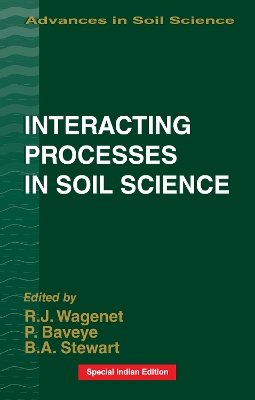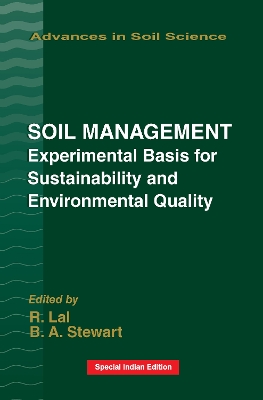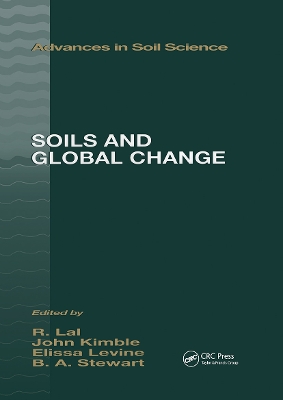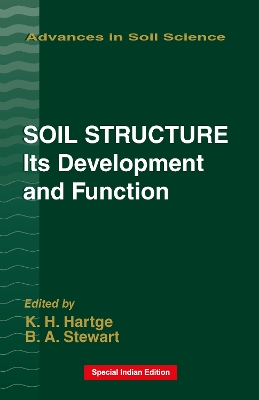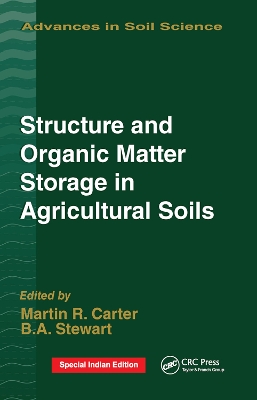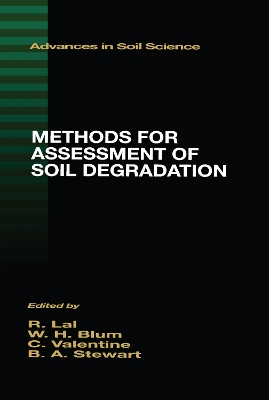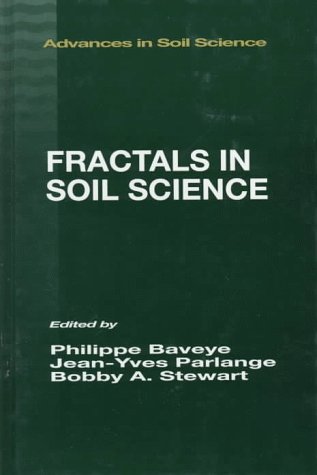Advances in Soil Science
8 primary works
Book 1
Soil Crusting Chemical and Physical Processes
by Malcolm E. Sumner and Bobby A Stewart
Book 2
Interacting Processes in Soil Science
by R.J. Wagenet, Philippe Baveye, and B.A. Stewart
Interacting Processes in Soil Science focuses on coupled processes in soil. Topics covered in this important volume include the effects of inorganic salts upon water flow, modeling of sorption, transport and transformation of organic solutes, and the effects of microorganisms on silicate clay minerals. The book presents studies and approaches that can be extended and complemented by innovative work in the future.
Interacting Processes in Soil Science will be an essential reference for all researchers and students in soil science, soil and water engineering, civil and environmental engineering, earth sciences, and hydrology.
Book 4
The experiments and experiences discussed in Soil Management carefully document crop production systems with well-defined boundaries. These long-term agronomic trials provide a valuable data resource that has, until now, been largely ignored by both the research community and the sustainability experts. With a rigorous definition of sustainability and this data, the sustainability of various cropping systems will be more clearly illustrated than any previous effort. Particular emphasis is given to research involving the tropics and sub-tropics.
This book is unique in providing an experimental basis for sustainable management of soil resources. It describes technological options for sustainable management of soil resources and identifies priorities for additional long-term experimentation needed in key ecoregions. Topics discussed include changes in soil processes and properties, environmental quality, soil management, soil dynamics, soil organic matter, and nutrient cycling.
Soil Management is for those who ask whether agriculture is sustainable, want to analyze or review sustainability experiments and experiences, or wish to initiate new long-term trials. It is a valuable reference on soil processes and an excellent text for courses in soil management.
Book 5
Soils and Global Change
by John M. Kimble, Elissa R. Levine, and Bobby A Stewart
The pedosphere - the thin mantel of soil on the earth's surface - plays a potentially crucial role in climate and climate change . The carbon storage of soils is the second largest in the biosphere, making the dynamics of soil organic carbon an important issue that must be understood if we are to fully comprehend global change.
This new book examines the importance of soils and their relationship to global change, specifically to the greenhouse effect. Soils and Global Change presents a state-of-the-art compendium of our present knowledge of soils. This up-to-date information source enables readers to delve into the literature about soils and climate change and examine soils in both natural and managed environments.
Book 7
Book 8
Structure and Organic Matter Storage in Agricultural Soils
by M R Carter and B.A. Stewart
Soils comprise the largest pool of terrestrial carbon and therefore are an important component of carbon storage in the biosphere-atmosphere system. Structure and Organic Matter Storage in Agricultural Soils explores the mechanisms and processes involved in the storage and sequestration of carbon in soils. Focusing on agricultural soils - from tropical to semi-arid types - this new book provides an in-depth look at structure, aggregation, and organic matter retention in world soils.
The first two sections of the book introduce readers to the basic issues and scientific concepts, including soil structure, underlying mechanisms and processes, and the importance of agroecosystems as carbon regulators. The third section provides detailed discussions of soil aggregation and organic matter storage under various climates, soil types, and soil management practices. The fourth section addresses current strategies for enhancing organic matter storage in soil, modelling techniques, and measurement methods.
Throughout the book, the importance of the soil structure-organic matter storage relationship is emphasized. Anyone involved in soil science, agriculture, agronomy, plant science, or greenhouse gas and global change studies should understand this relationship. Structure and Organic Matter Storage in Agricultural Soils provides an ideal source of information not only on the soil structure-storage relationship itself, but also on key research efforts and direct applications related to the storage of organic matter in agricultural soils.
Book 9
Methods for Assessment of Soil Degradation
by Rattan Lal, Winfried E. H. Blum, C Valentin, and B.A. Stewart
Book 12

